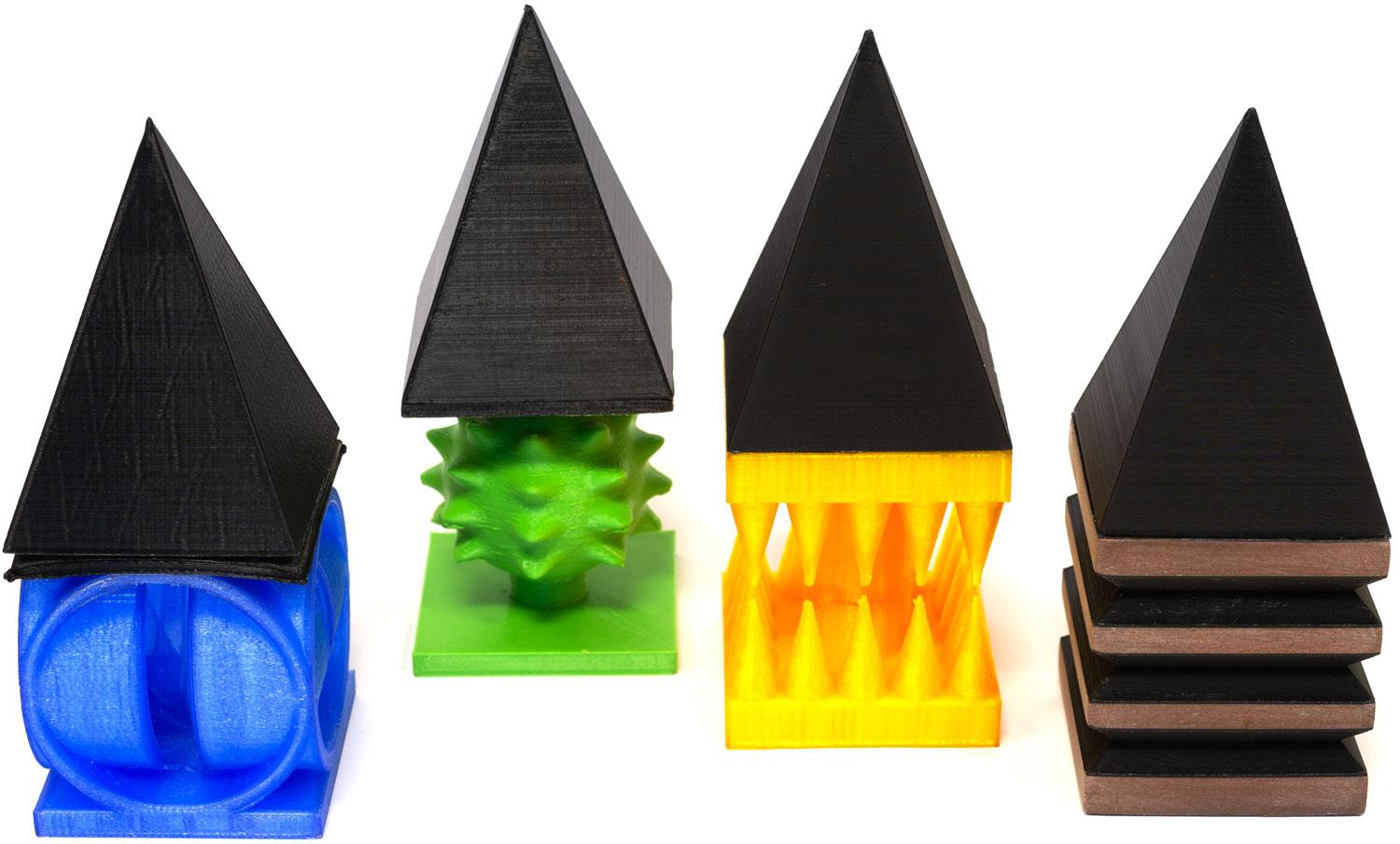3D printable files for objects to use in mouse object recognition tasks
These .stl files can be used for printing by any 3D printing method, but filament extrusion was used originally, to allow a wide range of materials to be used.
To increase the recognisability of the objects, some parts were printed in filaments of the following types:
- PLA of various colours
- Pet-G, translucent, of various colours
- PLA-based wood of various shades (dark wood, light wood, tropical wood)
- PLA-based 80% copper filament
If the file names have a -A or -B suffix, these paired files are assembled into a single object after printing. The 'Top.stl' part is glued on top of each object to prevent climbing.
We welcome researchers wishing to reuse our data to contact the creators of datasets. If you are unfamiliar with analysing the type of data we are sharing, have questions about the acquisition methodology, need additional help understanding a file format, or are interested in collaborating with us, please get in touch via email. Our current members have email addresses on our main site. The corresponding author of an associated publication, or the first or last creator of the dataset are likely to be able to assist, but in case of uncertainty on who to contact, email Ben Micklem, Research Support Manager at the MRC BNDU.

Creative Commons Attribution-ShareAlike 4.0 International (CC BY-SA 4.0)
This is a human-readable summary of (and not a substitute for) the licence.
You are free to:
Share — copy and redistribute the material in any medium or format
Adapt — remix, transform, and build upon the material for any purpose, even commercially.
This licence is acceptable for Free Cultural Works. The licensor cannot revoke these freedoms as long as you follow the license terms. Under the following terms:
Attribution — You must give appropriate credit, provide a link to the license, and indicate if changes were made. You may do so in any reasonable manner, but not in any way that suggests the licensor endorses you or your use.
ShareAlike — If you remix, transform, or build upon the material, you must distribute your contributions under the same licence as the original.
No additional restrictions — You may not apply legal terms or technological measures that legally restrict others from doing anything the licence permits.

